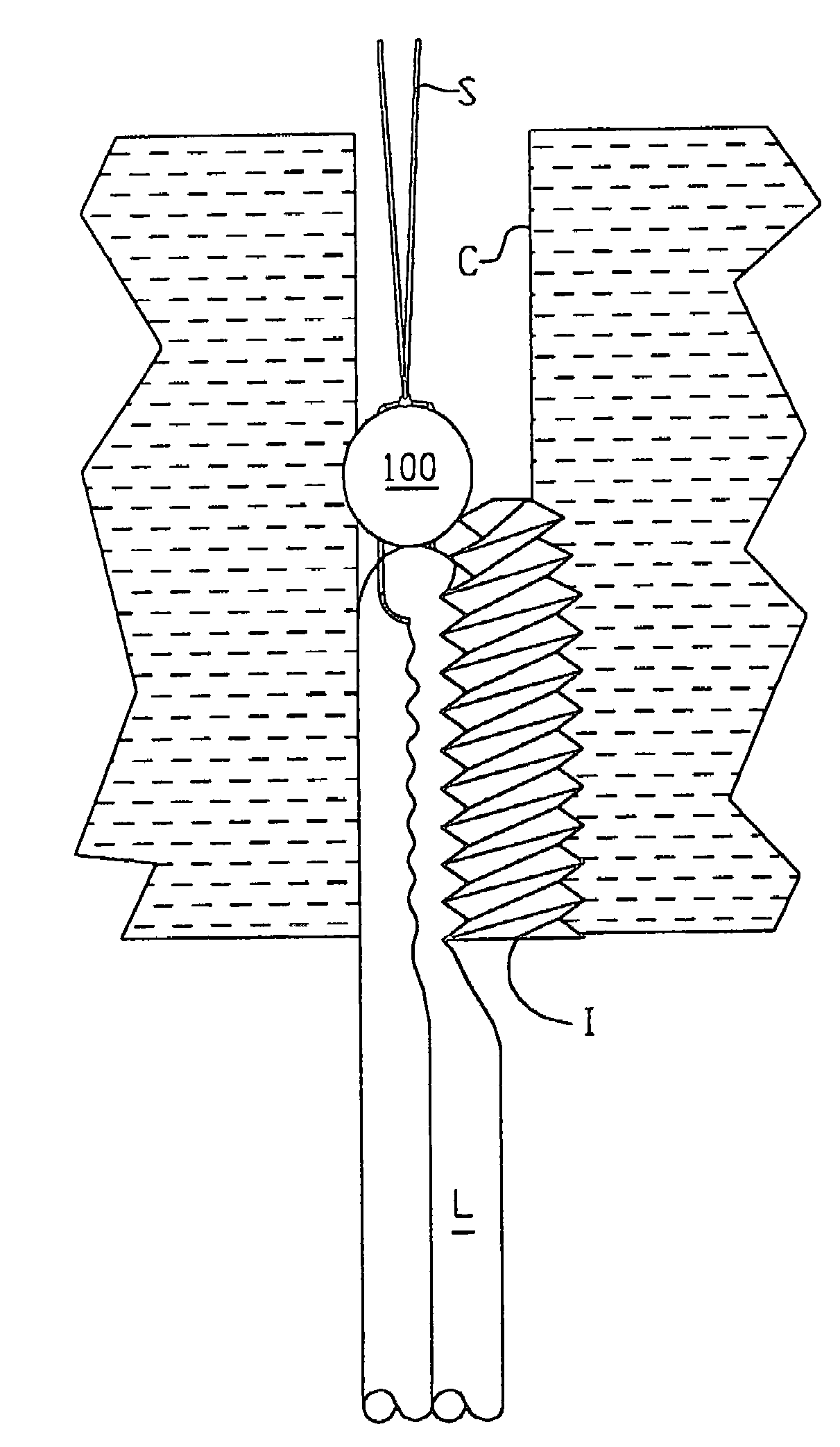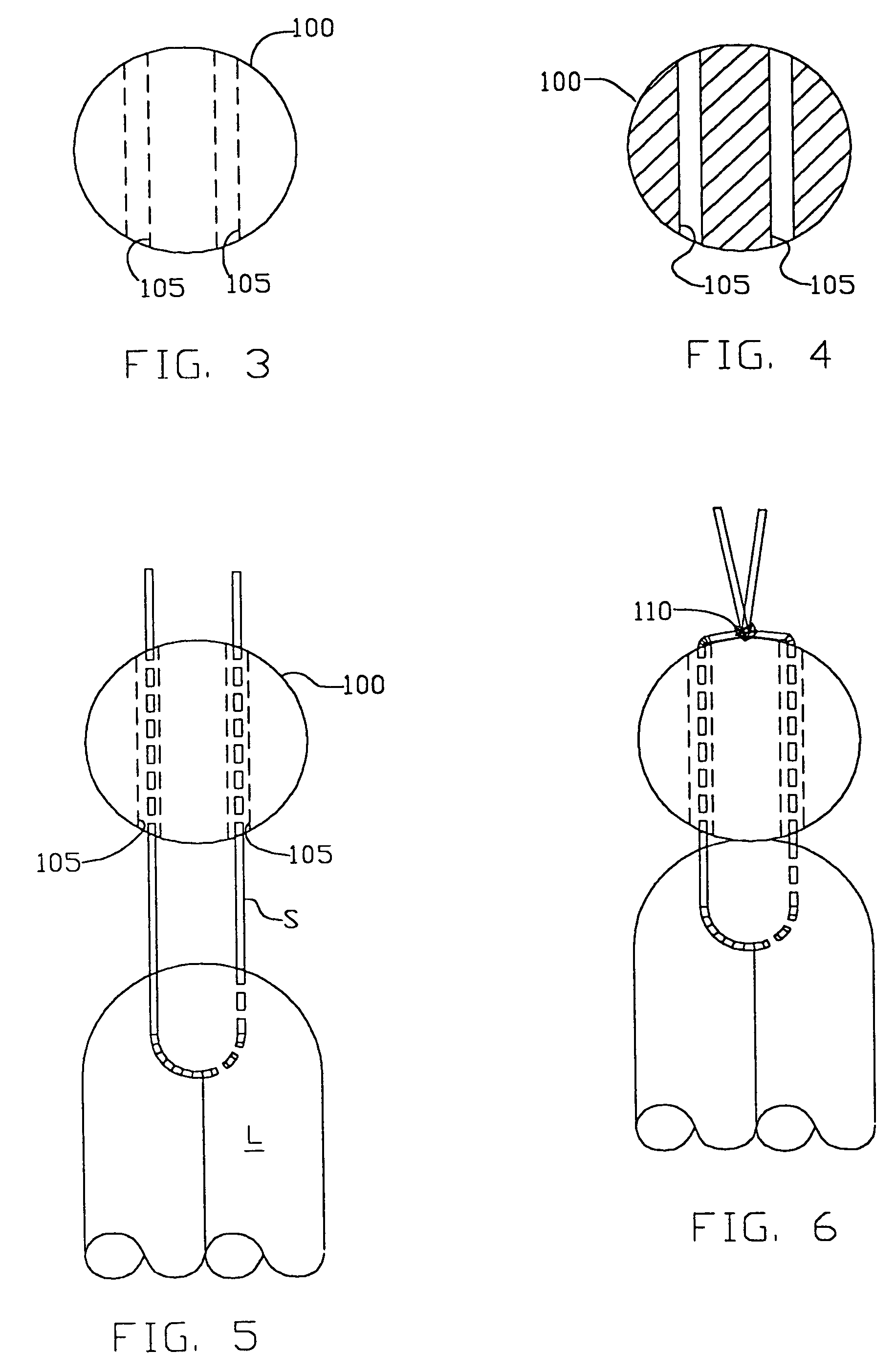Apparatus and method for ligament fixation
a technology of apparatus and methods, applied in the field of surgical equipment and methods, can solve the problems of affecting the healing of the ligament to the bone, the risk of the ligament being slipped under load, and the necrosis of the tendon, so as to improve the resistance to the ligament being slipped under static and cyclic loading, the effect of augmenting the interference screw fixing the ligamen
- Summary
- Abstract
- Description
- Claims
- Application Information
AI Technical Summary
Benefits of technology
Problems solved by technology
Method used
Image
Examples
Embodiment Construction
[0041]The present invention works in conjunction with a standard interference screw such as a Bioscrew (made by Linvatec) or an RCI screw (made by Smith and Nephew). The invention provides a jamming retainer which is attached to a ligament. The jamming retainer is positioned in a bone tunnel, and then, preferably, secured relative to the walls of the bone tunnel with an interference screw. More particularly, in one preferred embodiment, the interference screw urges the jamming retainer laterally against, and into, the wall of the bone tunnel. Interference between the jamming retainer and the walls of the bone tunnel fixes the ligament in the bone tunnel without ligament necrosis.
[0042]The interference screw also bears some of the load imparted on the jamming retainer by the ligament during normal use of the joint. Thus, even if the interference screw does not create a direct fixation between the jamming retainer and the wall of the bone tunnel, any slippage of the ligament will caus...
PUM
 Login to View More
Login to View More Abstract
Description
Claims
Application Information
 Login to View More
Login to View More - R&D
- Intellectual Property
- Life Sciences
- Materials
- Tech Scout
- Unparalleled Data Quality
- Higher Quality Content
- 60% Fewer Hallucinations
Browse by: Latest US Patents, China's latest patents, Technical Efficacy Thesaurus, Application Domain, Technology Topic, Popular Technical Reports.
© 2025 PatSnap. All rights reserved.Legal|Privacy policy|Modern Slavery Act Transparency Statement|Sitemap|About US| Contact US: help@patsnap.com



